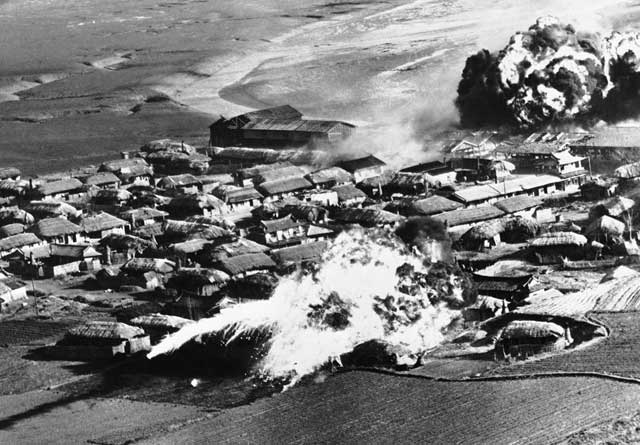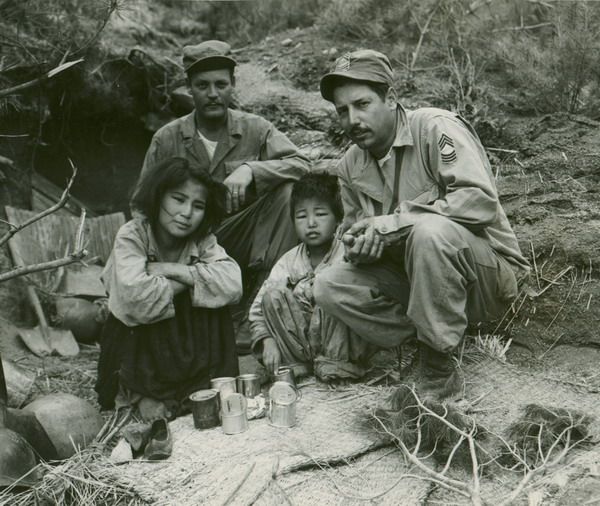Today’s democratic-capitalist project of eliminating the poor classes through development not only reproduces within itself the people that is excluded but also transforms the entire population of the Third World into bare life.
-Giorgio Agamben
I.
In early February, the Netherlands announced a total ban on inter-country adoptions. Tens of thousands of children were internationally adopted into the Netherlands in preceding decades, but an independent commission, the Committee Investigating Intercountry Adoption, found gross irregularities including child trafficking, baby farming, and complicity in abuses by staff of international adoption agencies. “Adoptees deserve recognition for mistakes that were made in the past,” said Sander Dekker, the Dutch minister for legal protection.
And for the future, we have to critically ask ourselves if and how to continue adoption from abroad.
Each year, thousands of children enter the United States as international adoptees. There have been around 200,000 American adoptions from the Republic of Korea alone, meaning Korean adoptees in the US constitute a population the size of Salt Lake City or Tallahassee. Despite the number of adoptees, the most popular adoption narratives center not us but our adoptive parents. There are so-called heroes who loudly document every step their newly acquired child takes in the “land of the free.” There are villains, like the parents who sent their adopted son on a one-way flight back to Russia with a note stating “I no longer wish to parent this child… I am returning him.” The role of the adopted child is mostly to grow up in gratitude to the family and country that took them in.
More and more internationally and transracially adopted people are pushing back on these narratives, speaking out about the challenges of growing up with white parents in a racist society, of being cut off from your language and culture, of the void that lingers at the beginning of a life said to start months or years after you were actually born. Adopted people are refusing to remain props in someone else’s stories.
To bring the richness of our lives out from under a one-sided narrative about adoption is important work. The Dutch ban on international adoption also provides an opportunity to examine another perspective connecting all of our personal stories. To be sure, in adoption there is family and rejection, gratitude and pain, but behind all that lurks the dull sheen of coltan and napalm’s gleaming clouds, the machinery of power and empire and war.
II.
The very fact of adoption between countries contains a great mystery. In the modern world, we are almost all blessed with membership in a nation-state, whose laws we are compelled to obey and who, in return, grants us citizenship and a list of rights and nominal protection from its capricious siblings, the other nations of the world. The only ones unfortunate enough to lack a state watching over them are the refugees expelled by their polity but admitted into no other, those of whom Hannah Arendt wrote,
Once they had left their homeland they remained homeless; once they had left their state they became stateless; once they had been deprived of their human rights they were rightless, the scum of the earth.
The stateless person is stripped of their political personhood, which is after all only ever the gift of one state or another. Without this, they find themselves lacking any recourse for their supposed human rights, for though human rights are said to be universal they are only ever in practice enforced by one army and judge and politician or another, or else not at all.
There is some overlap between the stateless and adoptive person: those tens of thousands of people whose adoptive parents failed to correctly register them to receive US citizenship. In general, the stateless person lacks the protection of any state whatsoever while the international adoptee enjoys citizenship in two consecutively, first their birth country, then the one which adopts them. Yet, like the stateless person, the adoptee finds themselves stripped of their citizenship in their home country when they are accepted into the nation of their adopters.
III.
To say that there is no international adoption without empire appears melodramatic, but to acknowledge that international adoptions transpire on the field of international relations seems tautological. The countries which supply the United States with children are largely those which supply it with commodities. Indeed, the Dutch report states that the creation of an adoption market converts “children into tradeable goods (‘commodification’) – including market terms such as ‘supply and demand’, ‘channels’, ‘brokers’ and ‘permits.’” Children arrive from China, like smartphones, and Colombia, like oil. They do not appear from Germany or England or France. There are no overseas flights of white babies from the Hamptons or Beverly Hills destined for families in Belgrade or Caracas. One recoils at the thought. (Of the few American babies adopted overseas, a numerical majority are Black.)
An example of the politics of adoption: one in five Koreans were killed in a war in which United Nations Command leader Douglas MacArthur lobbied to turn North Korea into a permanently radioactive wasteland with thirty atomic bombs. The first generation of Korean adoptees were the mixed-race offspring of UN or American soldiers and Korean women.

In 1953, the United States and South Korea signed a postwar security pact. That same year, Congress passed the Refugee Relief Act, which, among other things, reserved 4,000 non-quota immigrant visas to orphans under the age of ten. This is remarkable, since Asian immigration to the United States was effectively banned since 1924. Three years earlier, Christian charity World Vision created sponsorship programs for orphaned children.
For ordinary Americans to take these children into their very own homes was not mere charity but the execution of an American objective to project “a humanitarian endeavor… while concealing US responsibility” for a devastating war on the opposite side of the world.
Adoption served a purpose for the government of South Korea, as well. As the Republic of Korea emerged from Japanese colonization, it used ethnic homogeneity to justify its unity as a new polity, supposedly free from foreign control. After decades of foreign occupation, mixed-race children were a reminder of the historical non-sovereignty of the Korean people. There was no room in this narrative for children that posed an economic burden as well as serving as a reminder of foreign occupation.
The biological fact of Korean ethnicity was made to coincide with the political life of a Korean citizen. Philosopher Giorgio Agamben writes that the attempt to ground the qualified life of persons — the lives of specific people with biographies and passports and names — in brute biological life itself is the threshold of modernity. The Republic of Korea exercised its newfound sovereignty by removing citizenship from orphaned children, stripping them of the qualified life of citizens, reducing them to their brute biological life before the United States granted them personhood once more.
IV.
In 1960, South Korea had a per capita income of $62. By way of comparison, this was the Japanese figure almost a century before, in 1868. Four years earlier, CIA analysts declared that the DPRK was ahead of South Korea in industrial development and income per capita. Policymakers in the United States had little hope for Korean development, despite the fact that US aid accounted for 75% of the fixed capital investment in the country since the end of the war. The Republic of Korea was supposed to be a model country, demonstrating the superiority of Western democratic capitalism to the Soviet system in neighboring DPRK; the trouble was that the partition left the DPRK with a larger industrial base and higher GDP for decades to come.
Things looked up, however, with Park Chung-hee’s 1961 military coup. Park pursued anti-communist policies and export-oriented development, tying the success of the state to that of large chaebol corporations like Hyundai and Samsung. The US under Kennedy made it clear that US support of the regime was contingent upon continued economic development. One of the Park administration’s first acts was to implement the Orphan Adoption Special Law followed by the Child Welfare Act, both of which facilitated international adoption. Economic development was not only desirable; it was fundamentally necessary to the regime's survival.
The second wave of adoptees were not mixed-race war orphans but the fully Korean children of single mothers. Continuing international adoption was a way to deal with overpopulation, it allowed the state to avoid costly orphanages, and it precluded the necessity of providing social services to unwed lower-class mothers who are the main providers of children for international adoption. The state thus withdrew care from a portion of its population not based on biological markers (mixed-race war orphans versus ethnically Korean children) but on economic utility (children requiring care by the state versus children provided for by family units). Though the rationale changed, the practice remained. Whether motivated by the demands of an ethnic nation and postwar PR or the developmentalist logic of the Cold War, children were expelled from their nation, stripped of political personhood to become, for a fleeting instance, what Agamben calls mere bare life.
V.
When Agamben speaks of bare life, those stripped by the state of their specific lives and identities and reduced to being merely biologically alive as are plants and animals, his exemplary case is the concentration camp. Those stripped of their legal personhood in the camps were then liable to mass executions; when the state removes its protection from us, when it ceases to foster our life and protect our political personhood, it may then let us die.
The case of international adoption reminds us that when the state ceases its maintenance of our lives, we may face expulsion rather than death. This is missing in Agamben’s work, though not in that of two of his main references: Arendt, who wrote of stateless people, and Michel Foucault, who wrote that states “let die” not only those killed but also those who face “political death, expulsion, rejection.”
The common narrative of adoption beckons us to disregard all of the above to think only of the charity and familial warmth which imperial citizens offer to destitute foreign children. We might question at whose hands their destitution transpired, whether this destitution may have in fact had aforementioned citizens as its beneficiaries. We might also reflect on the lesson which queer and feminist scholars remind us of again and again: that trajectories of power do not cease where family begins.

The story of Korean adoption to the United States therefore involves more than the charity and good-heartedness of American prospective parents, but was borne of the interests of a client state and an imperial power. It lifts the mask of democratic capitalism to expose not only empire but the contingency of personhood as conferred by the state, especially when the state in question is beholden to another, more powerful and better armed.
Adoptees are asked for gratitude. And surely to be grateful for what one has received is a virtue for everyone, adopted or not. One might be grateful for guidance and gifts, for true family and friends, for compassion and solidarity and kindnesses and the million small things which balance out the difficulties and pains of the world.
But as adoptees, we must remember, remind, embody a simple proposition: we owe the empire nothing.
Banner Image Source: http://koreanchildren.org

Comments powered by Talkyard.